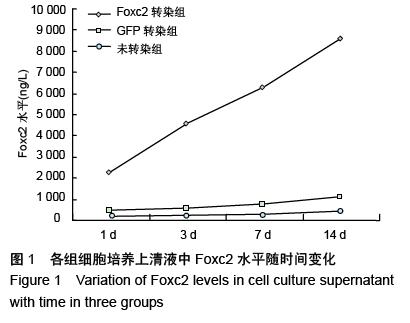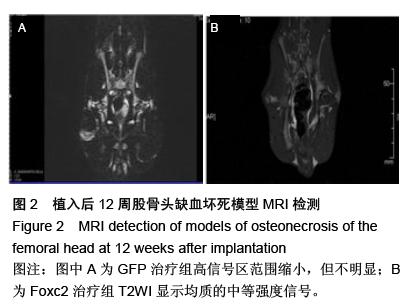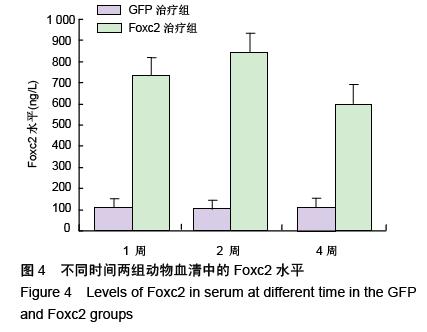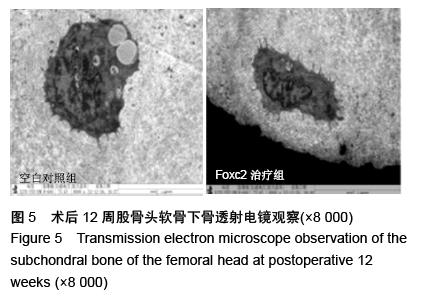| [1] 朱振安,严孟宁.成人股骨头坏死的病因和发病机制[J],中华骨科杂志,2010,30(1):6-9.
[2] Wang C, Peng J, Lu S. Summary of the various treatments for osteonecrosis of the femoral head by mechanism: A review. Exp Ther Med. 2014;8(3):700-706.
[3] Arlet J. Nontraumatic avascular necrosis of the femoral head. Past, present, and future. Clin Orthop Relat Res. 1992;(277):12-21.
[4] Mont MA, Hungerford DS, Maryland B. Current concepts review: nontraumatic avascular necrosis of the femoral head. J Bone Joint Surg(Am). 1995; 77(3): 459-474.
[5] 汪亮,刘耀升,刘蜀斌.股骨头坏死的再生治疗的研究进展[J].中国骨与关节外科杂志,2015,8(1):90-96.
[6] Asada T, Kushida T, Umeda M, et al. Prevention of corticosteroid-induced osteonecrosis in rabbits by intra-bone marrow injection of autologous bone marrow cells. Rheumatology (Oxford). 2008;47(5):591-596.
[7] 陈述祥,董锐.成人股骨头坏死的评估与治疗进展[J].中国矫形外科杂志,2011,19(18):1529-1532.
[8] 康鹏德,裴福兴,杨静,等.骨髓脂肪细胞向成骨细胞的转分化[J] .中国组织工程研究与临床康复,2011,15(1):17-22.
[9] Cederberg A, Grønning LM, Ahrén B, et al. FOXC2 is a winged helix gene that counteracts obesity, hypertriglyceridemia, and diet-induced insulin resistance. Cell. 2001;106(5):563-573.
[10] Kim HK.Introduction to osteonecrosis of the femoral head (OFH) and osteonecrosis of the jaw (ONJ).J Musculoskelet Neuronal Interact. 2007;7(4):350-353.
[11] Kim HK.Introduction to osteonecrosis of the femoral head (OFH) and osteonecrosis of the jaw (ONJ).J Musculoskelet Neuronal Interact. 2007;7(4):350-353.
[12] Fu WL, Zhou CY, Yu JK. A new source of mesenchymal stem cells for articular cartilage repair: MSCs derived from mobilized peripheral blood share similar biological characteristics in vitro and chondrogenesis in vivo as MSCs from bone marrow in a rabbit model. Am J Sports Med. 2014;42(3):592-601.
[13] Wang D, Haile A, Jones LC. Dexamethasone-induced lipolysis increases the adverse effect of adipocytes on osteoblasts using cells derived from human mesenchymal stem cells. Bone. 2013;53(2):520-530.
[14] Cui Q, Wang Y, Saleh KJ, et al. Alcohol-induced adipogenesis in a cloned bone-marrow stem cell. J Bone Joint Surg Am. 2006;88 Suppl 3:148-154.
[15] Abe K, Yamashita T, Takizawa S, et al. Stem cell therapy for cerebral ischemia: from basic science to clinical applications. J Cereb Blood Flow Metab. 2012; 32(7):1317-1331.
[16] Jia X, Xie X, Feng G, et al. Bone marrow-derived cells can acquire renal stem cells properties and ameliorate ischemia-reperfusion induced acute renal injury. BMC Nephrol. 2012;13:105.
[17] 赵凤朝,李子荣,张念非,等.坏死面积比例在预测股骨头塌陷中的价值[J].中华骨科杂志,2005,25(9):520-523.
[18] Romero-Prado M, Blázquez C, Rodríguez-Navas C, et al. Functional characterization of human mesenchymal stem cells that maintain osteochondral fates. J Cell Biochem. 2006;98(6):1457-1470.
[19] 黄陆力,周冬冬,付庆林,等.大鼠干细胞种植血管的免疫原性研究[J].中华实验外科杂志,2012,29(9):1709-1712.
[20] Jiang Y, Jahagirdar BN, Reinhardt RL, et al. Pluripotency of mesenchymal stem cells derived from adult marrow. Nature. 2002;418(6893):41-49.
[21] 徐振东,汪国栋,刘曦明,等.新型骨髓干细胞富集材料富集骨髓细胞的效果[J].中国组织工程研究, 2014,18(39): 6316-6322.
[22] Kanczler JM, Oreffo RO. Osteogenesis and angiogenesis: the potential for engineering bone. Eur Cell Mater. 2008;15:100-114.
[23] Mullen CA, Vaughan TJ, Billiar KL, et al. The effect of substrate stiffness, thickness, and cross-linking density on osteogenic cell behavior. Biophys J. 2015;108(7): 1604-1612.
[24] Petrie TA, Raynor JE, Reyes CD, et al. The effect of integrin-specific bioactive coatings on tissue healing and implant osseointegration. Biomaterials. 2008; 29(19):2849-2857.
[25] Kruyt M, De Bruijn J, Rouwkema J, et al. Analysis of the dynamics of bone formation, effect of cell seeding density, and potential of allogeneic cells in cell-based bone tissue engineering in goats. Tissue Eng Part A. 2008;14(6):1081-1088.
[26] Kim SH, Cho KW, Choi HS, et al. The forkhead transcription factor Foxc2 stimulates osteoblast differentiation. Biochem Biophys Res Commun. 2009; 386(3):532-536.
[27] Kume T. The Role of FoxC2 Transcription Factor in Tumor Angiogenesis. J Oncol. 2012;2012:204593.
[28] Ficat RP. Idiopathic bone necrosis of the femoral head. Early diagnosis and treatment. J Bone Joint Surg Br. 1985;67(1):3-9.
[29] Israelite C, Nelson CL, Ziarani CF, et al. Bilateral core decompression for osteonecrosis of the femoral head. Clin Orthop Relat Res. 2005;441:285-290.
[30] 姜华.髓芯减压联合自体外周血干细胞治疗早期股骨头坏死的疗效[J].广东医学,2013,34(13):2073-2074.
[31] 章乐成,尹宗生.骨髓间充质干细胞及其载体在股骨头坏死治疗中的研究与进展[J].中国组织工程研究,2014, 18(3):440-445.
[32] Ellenrieder M, Tischer T, Kreuz PC, et al. Arthroscopically assisted therapy of avascular necrosis of the femoral head.Oper Orthop Traumatol. 2013; 25(1): 85-94.
[33] Johnstone B, Yoo JU. Autologous mesenchymal progenitor cells in articular cartilage repair. Clin Orthop Relat Res. 1999;(367 Suppl):S156-162.
[34] 尤武林,王坤正,段大鹏,等. 插头/翼状螺旋转录因子C2基因慢病毒载体构建及其在兔BMSCs中的表达[J].中国矫形外科杂志,2013,27(5):535-540.
[35] Zhang YG, Yang Z, Zhang H, et al. Negative pressure technology enhances bone regeneration in rabbit skull defects. BMC Musculoskelet Disord. 2013;14:76.
[36] Kasper G, Dankert N, Tuischer J, et al. Mesenchymal stem cells regulate angiogenesis according to their mechanical environment. Stem Cells. 2007;25(4): 903-910.
[37] Hayashi H, Sano H, Seo S, et al. The Foxc2 transcription factor regulates angiogenesis via induction of integrin beta3 expression. J Biol Chem. 2008;283(35):23791-23800. |
.jpg)





.jpg)